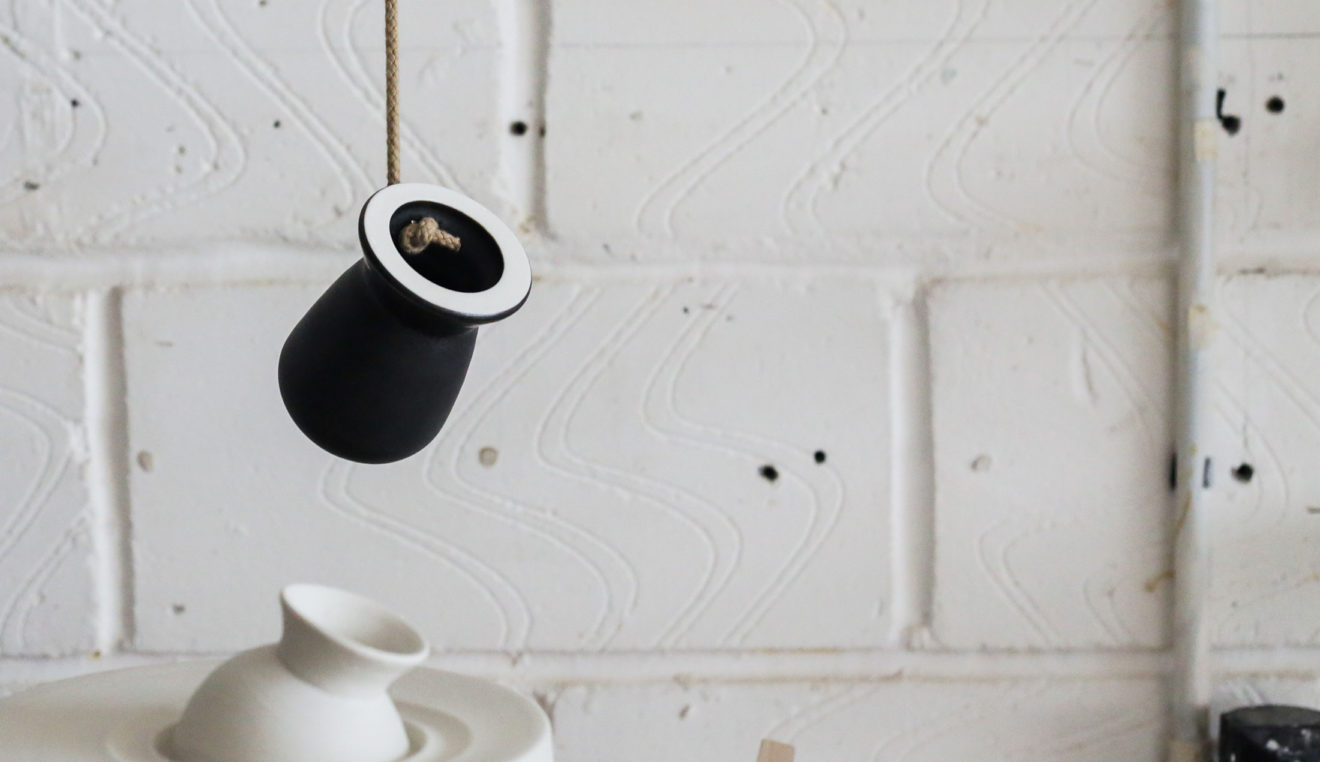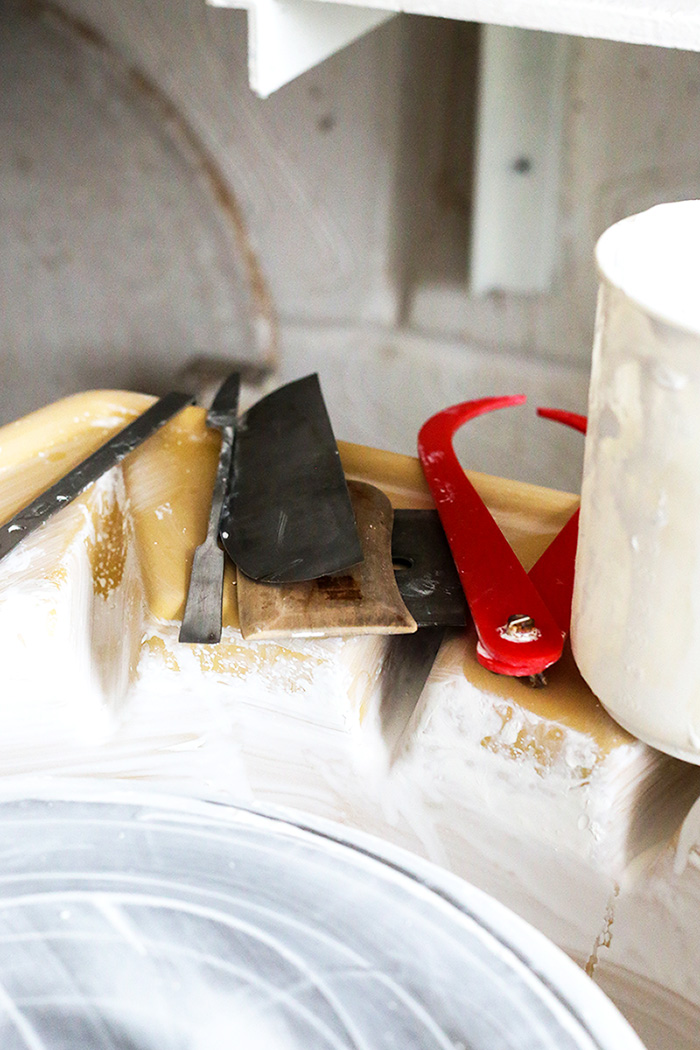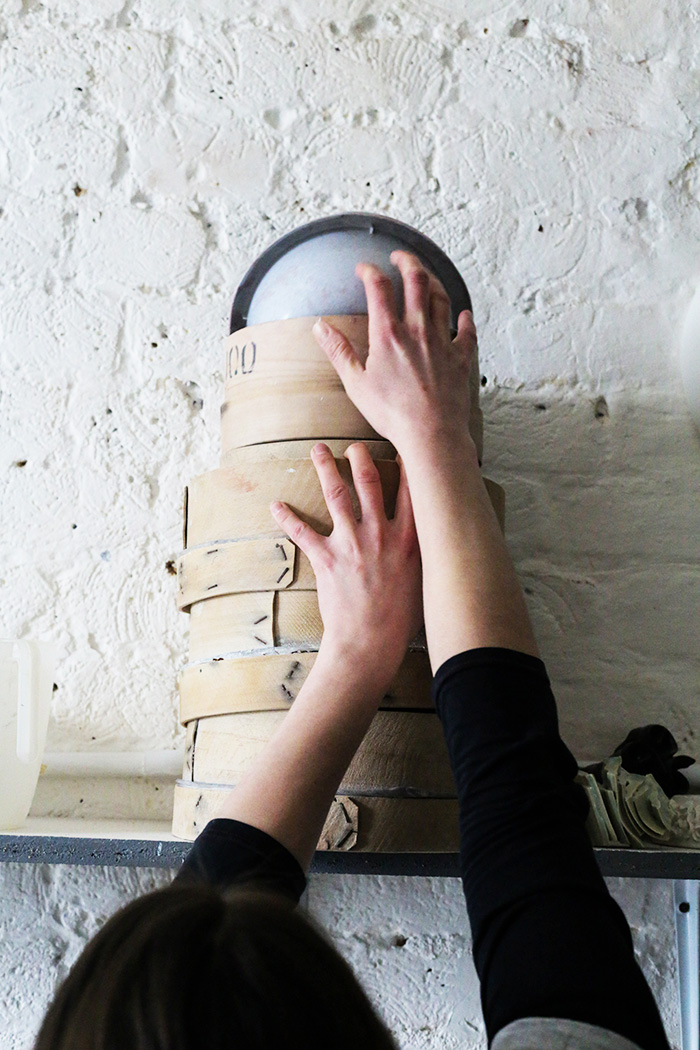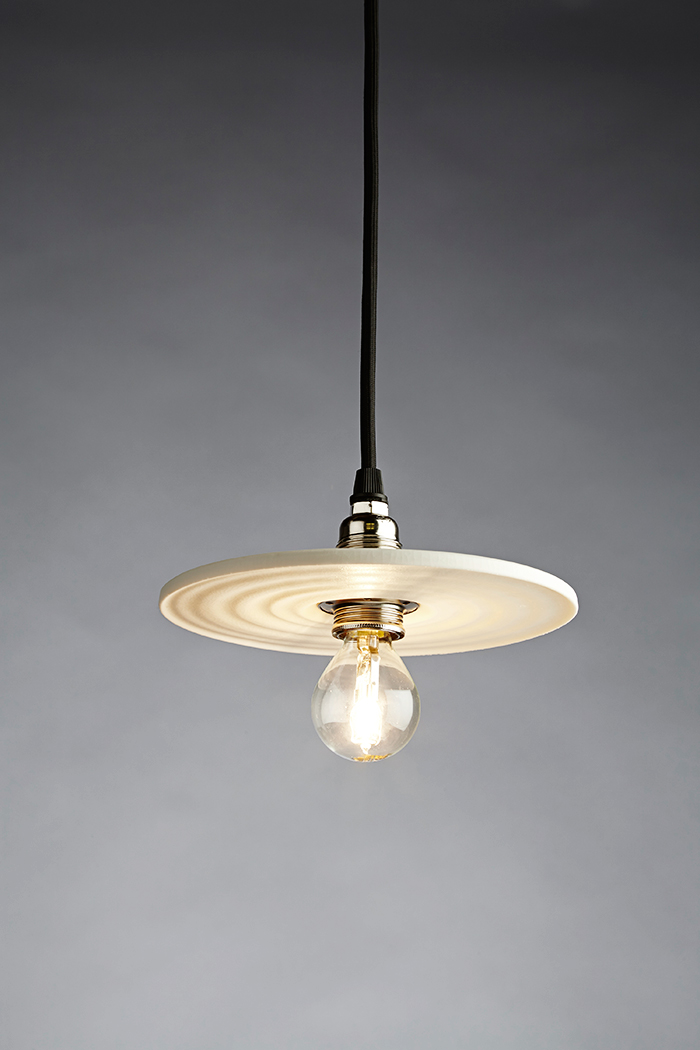Jo Davies
Jo Davies is an award-winning ceramicist who specialises in wheel-thrown and hand-built porcelain. She graduated from the Royal College of Art and creates pieces for the home that are both functional and decorative. We visited Jo at her studio in London.
I was born in London but moved with my family to the Welsh borders when I was two to live in a remote house on a hill, eventually settling in Herefordshire near Hay on Wye. I went to a local girls’ school in Monmouth that had been set up by a Medieval Guild – The Haberdashers. Despite the Medieval routes it was quite a progressive place for young women in the 90’s and I don’t have anything bad to say about it, quite the opposite. It was there that I discovered and was allowed to explore ceramics freely. For a school that mostly produced lawyers, doctors and generally traditional professionals I felt like a welcome odd one out! There was definitely a sense that you can do anything and we were told as much, not in an entitled, arrogant way, it was simply a true feminist bastion.
So many things. Clay is so much part of my personality that everything I see and do affects me incrementally. I rarely take one subject matter that is easily quantifiable and turn it into work. I admit that much of my work is now self-referential and has become a gentle evolution.
I like things that are useful so my hand tools in the studio are vital to me. I have a stainless steel knife that is probably my favourite.
My engagement ring, handmade by Maya Selway.
Home means a place to relax, excluding work and containing the person or people you’re closest to.
I live on a boat, we move through the canals and rivers of London and beyond.
Yes! In a totally intangible way. I don’t think I can explain it!
I want them to feel good and for those objects to enhance lives. Some work is made to delight, to have a sense of newness relative to the rest of the world.

I’m currently making larger work that has a sense of other-worldly qualities with some humour. I want the work to extend from its domestic scale and become less subtle in form but maintaining its subtle detail.
Of old, a ceramicist called Barbara Nanning. Very recently, I’m enjoying the arrangements and style of the florist Lara Sanjar, who also goes under the name of Wild Renata Flowers.
None that are ritualised but I probably do on a subconscious level. There are ways of working that you can’t get away from, the process demands that you cannot avoid. One of the main things I love about working in my studio is that I spend most of my time alone. I’m not anti-social, I love meeting with people and friends but I like the fact that I can take a break when it’s the right time for my own rhythm, a gap in the work – let the clay dry for a while, have lunch, go back to it. This may happen at 11:30, it may happen at 1:30. I’m not erratic, different days just have different requirements.
Be patient. Often people will have an idea and think they can achieve it in two weeks without building the skill required to make that idea. I have seen this in undergraduate ceramics students as well as people who are brand new to clay. Give yourself time to enjoy learning for its own sake, learn the clay, learn its idiosyncrasies and let the objects flow from there.




















